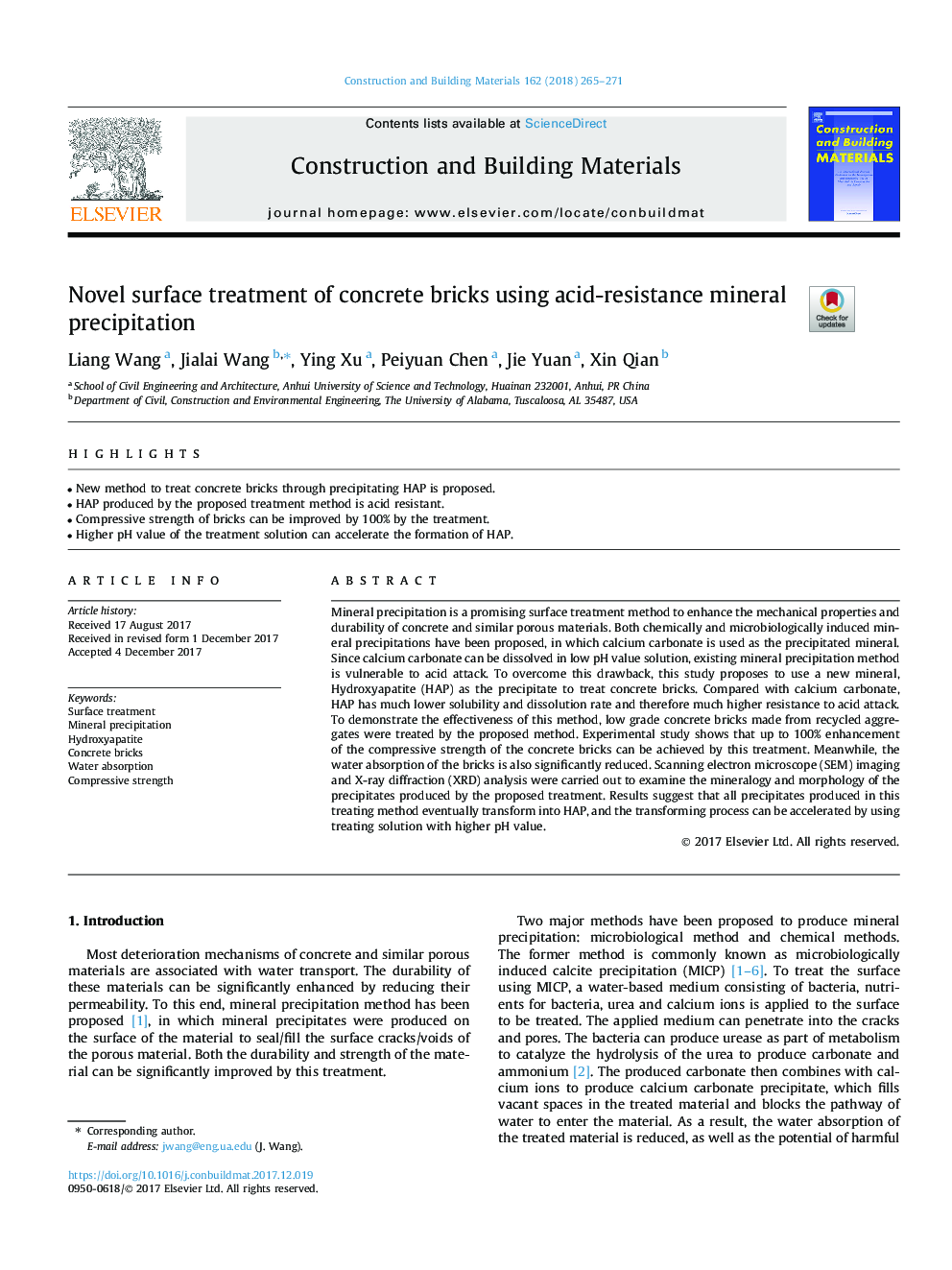| Article ID | Journal | Published Year | Pages | File Type |
|---|---|---|---|---|
| 6716480 | Construction and Building Materials | 2018 | 7 Pages |
Abstract
Mineral precipitation is a promising surface treatment method to enhance the mechanical properties and durability of concrete and similar porous materials. Both chemically and microbiologically induced mineral precipitations have been proposed, in which calcium carbonate is used as the precipitated mineral. Since calcium carbonate can be dissolved in low pH value solution, existing mineral precipitation method is vulnerable to acid attack. To overcome this drawback, this study proposes to use a new mineral, Hydroxyapatite (HAP) as the precipitate to treat concrete bricks. Compared with calcium carbonate, HAP has much lower solubility and dissolution rate and therefore much higher resistance to acid attack. To demonstrate the effectiveness of this method, low grade concrete bricks made from recycled aggregates were treated by the proposed method. Experimental study shows that up to 100% enhancement of the compressive strength of the concrete bricks can be achieved by this treatment. Meanwhile, the water absorption of the bricks is also significantly reduced. Scanning electron microscope (SEM) imaging and X-ray diffraction (XRD) analysis were carried out to examine the mineralogy and morphology of the precipitates produced by the proposed treatment. Results suggest that all precipitates produced in this treating method eventually transform into HAP, and the transforming process can be accelerated by using treating solution with higher pH value.
Related Topics
Physical Sciences and Engineering
Engineering
Civil and Structural Engineering
Authors
Liang Wang, Jialai Wang, Ying Xu, Peiyuan Chen, Jie Yuan, Xin Qian,
